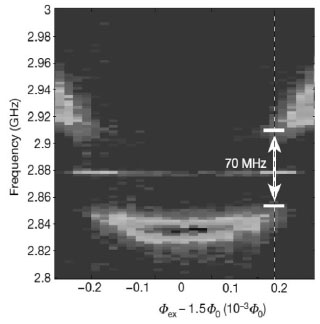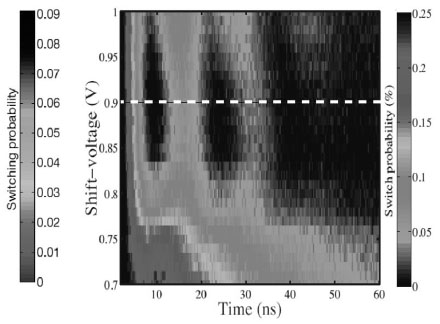Hayato Nakano1, William J. Munro2, Yasuhiro Tokura1, Mark S. Everitt3, Kae Nemoto3,
Makoto Kasu4, Norikazu Mizuochi5,6, and Kouichi Semba1
1Physical Science Laboratory, 2Optical Science Laboratory, 3National Institute of Informatics,
4Materials Science Laboratory, 5Osaka University, 6PREST-JST
During the last several years, significant effort into superconducting
quantum bits (qubits) based on Josephson junctions have been made. However,
the experimentally reported coherence times are likely to be insufficient
for future large-scale quantum computing. A natural solution is an engineered
quantum memory based on atomic and molecular systems. An electron spin
trapped at a nitrogen-vacancy (NV-) center in diamond is known to have a very long coherent time and can
be coupled via mutual inductance to a flux qubit. It is therefore an ideal
candidate to acts as a quantum memory for our flux qubit.
We have designed and fabricated an upgraded flux qubit, whose gap can be tuned in situ by two high bandwidth control lines [1], giving two fundamental improvements: "gap control" and "σx coupling". Based on these fundamental improvements many new applications can be realized. For example, it opens up the possibility to realize a high fidelity coupling to other quantum systems and so demonstrate a quantum memory operation.
We glued an NV- diamond sample on top of our superconducting circuit. We for the first time observed an anti-crossing structure at 2.88 GHz which clearly shows a 〜70 MHz coupling between the NV- spin ensemble and the gap-tunable flux qubit (Fig. 1). Furthermore we
also observed the coherent exchange of a single quantum of energy between
the flux qubit and a macroscopic ensemble consisting of about 6×107 NV- centers (Fig. 2). This is the first step towards the realization of a
long-lived quantum memory and hybrid devices coupling microwave and optical
systems [2].
This work was supported by KAKENHI.
[1] X. Zhu et al., Appl. Phys. Lett. 97 (2010) 102503.
[2] X. Zhu et al., Nature 478 (2011) 221.
 |
 |
|||||
|
|